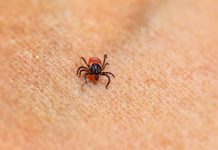Welcoming a new puppy into your home is an exciting and joyful experience, filled with playful antics and heartwarming moments. As a responsible pet owner, one of your most important tasks is ensuring your furry friend receives the proper nutrition to grow into a healthy and happy adult dog. However, striking the right balance between feeding enough and overfeeding can be a delicate task. Overfeeding can lead to obesity and other health issues, while underfeeding can stunt your puppy’s growth and development. In this guide, we’ll walk you through the essentials of feeding your puppy correctly, offering practical tips and advice to help you nurture your pet with love and care. Let’s embark on this journey together to ensure your puppy thrives without the risk of overfeeding.
Choosing the Right Portion Size for Your Puppy’s Growth
When it comes to feeding your puppy, determining the right portion size is crucial for their healthy development. Puppies are growing rapidly, and their nutritional needs differ significantly from adult dogs. Understanding the appropriate portion sizes can help prevent overfeeding, which can lead to obesity and other health issues.
- Consult the Puppy Food Packaging: Most high-quality puppy foods provide guidelines on portion sizes based on weight and age. Use these as a starting point.
- Consider Your Puppy’s Breed: Different breeds have varying growth rates and nutritional needs. Larger breeds may require more food than smaller breeds.
- Monitor Weight and Adjust Accordingly: Regularly weigh your puppy and adjust their food intake as they grow. Look for a visible waistline and palpable ribs as indicators of healthy weight.
- Feed in Multiple Small Meals: Puppies have small stomachs and can’t handle large meals. Split their daily intake into three to four meals to avoid overloading their digestive system.
Remember, every puppy is unique, and their needs can vary. Regular veterinary check-ups will help ensure your puppy’s diet is on track and that they are growing healthily.
Understanding Puppy Nutrition and Meal Timing
Ensuring your puppy gets the right nutrients at the right time is crucial for their growth and well-being. Puppies have unique dietary needs compared to adult dogs, requiring more frequent meals to support their rapid development. It’s important to strike a balance between providing enough nourishment and avoiding overfeeding, which can lead to obesity and related health issues. Here are some key aspects to consider when planning your puppy’s meals:
- Frequency: Puppies typically need to be fed three to four times a day until they reach about six months old. This helps maintain their energy levels and supports healthy digestion.
- Portion Control: Follow the feeding guidelines on your puppy’s food packaging, adjusting the portion size based on their age, weight, and activity level. It’s also wise to consult your veterinarian to tailor the meal plan to your puppy’s specific needs.
- Quality Ingredients: Opt for high-quality puppy food that contains essential nutrients like proteins, fats, vitamins, and minerals. Look for ingredients such as chicken, lamb, or fish as the primary protein source.
- Regular Monitoring: Keep an eye on your puppy’s weight and adjust meal sizes as needed. Regular vet check-ups will help ensure your puppy is growing at a healthy rate.
By maintaining a consistent feeding schedule and monitoring portion sizes, you’ll help your puppy develop healthy eating habits that can last a lifetime. Remember, each puppy is unique, and understanding their individual needs is key to preventing overfeeding.

Tips for Monitoring Your Puppy’s Weight and Adjusting Their Diet
Ensuring your puppy maintains a healthy weight is crucial for their overall development and well-being. Here are some strategies to help you keep track of their weight and make necessary dietary adjustments:
- Regular Weigh-ins: Weigh your puppy every couple of weeks to monitor their growth. You can do this at home using a bathroom scale or during vet visits. Keep a log to track their progress over time.
- Body Condition Scoring: Learn to assess your puppy’s body condition visually and by touch. You should be able to feel their ribs without excess fat covering and see a noticeable waist when viewed from above.
- Portion Control: Use the feeding guidelines on your puppy’s food packaging as a starting point, but adjust based on their activity level and growth. Over time, you’ll develop a sense of their individual needs.
- Quality Over Quantity: Choose high-quality, nutrient-dense foods designed for puppies. These foods often require smaller portions to meet nutritional needs, helping to prevent overfeeding.
- Consult Your Veterinarian: Regular check-ups with your vet can provide professional insights into your puppy’s weight and diet, ensuring they’re on the right track.
By staying attentive to these aspects, you’ll be setting a strong foundation for your puppy’s health and happiness.
















